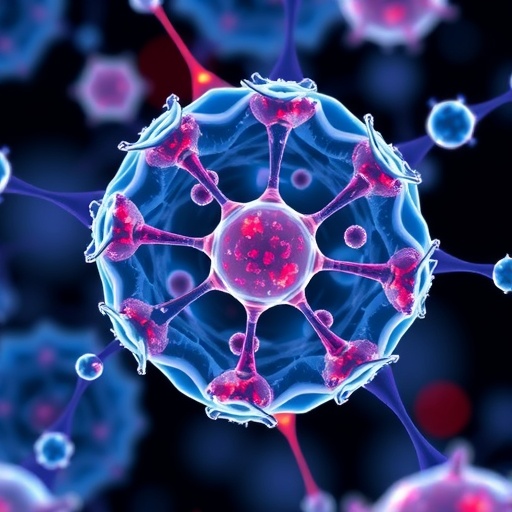Cellarity, a pioneering biotechnology company at the forefront of drug discovery innovation, has published an influential manuscript in the eminent journal Science. This publication introduces a groundbreaking framework that integrates advanced transcriptomic datasets with cutting-edge artificial intelligence models, revolutionizing the landscape of drug development by providing unprecedented insights into cellular mechanisms. The synergy of high-dimensional multi-omics data and dynamic AI modeling offers a transformative approach to understanding and correcting complex diseases at the cellular level.
At the heart of Cellarity’s innovation is the concept of Cell State-Correcting therapies, which shift focus from traditional single-gene targeting to a more holistic view of cellular states and their dynamic interactions. Through their robust discovery platform, Cellarity harnesses the power of single-cell transcriptomics to map intricate gene networks and pathway interactions that define cell function. This expansive molecular resolution allows for the identification of therapeutic targets that can restore healthy cellular states, rather than merely alleviating symptoms or inhibiting isolated molecular targets.
The integration of generalizable AI models acts as a pivotal component in this platform, linking comprehensive chemical libraries to disease-associated cellular phenotypes. This approach enables the design of drug candidates that can precisely modulate gene regulatory networks and signaling pathways disrupted in diseases. Notably, Cellarity’s lead compound, CLY-124, currently under Phase 1 clinical trial evaluation, exemplifies this platform’s potential by targeting sickle cell disease through an innovative Globin-Switching mechanism—effectuating a restorative recalibration of hemoglobin expression in affected cells.
The Science publication details a reproducible blueprint for incorporating machine learning approaches into drug discovery pipelines. Importantly, the framework addresses and overcomes key limitations endemic to conventional phenotypic drug screening, such as low hit rates and poor translatability. By utilizing a lab-in-the-loop active learning system powered by high-throughput transcriptomics, the platform continuously refines its predictive algorithms, leveraging experimental feedback to enhance the identification of biologically active compounds. Impressively, this iterative process has demonstrated a 13- to 17-fold improvement in recovering phenotypically relevant drug candidates compared to industry norms.
Dr. Parul Doshi, Chief Data Officer at Cellarity, emphasizes that this comprehensive cellular profiling approach equips scientists with the ability to visualize and interpret complex disease mechanisms with unprecedented clarity. By dynamically modeling how cells transition between states in response to perturbations, the platform identifies therapeutic interventions that recalibrate dysfunctional cellular networks. This represents a radical shift toward precision medicine tailored to correcting disease at its cellular foundation rather than addressing downstream effects.
Co-author Jim Collins, MIT Termeer Professor of Medical Engineering & Science and co-founder of Cellarity, articulates that traditional drug discovery’s focus on single targets has hindered advancements, especially for multifactorial diseases driven by intricate gene interactions. By integrating phenotypic analysis with a polypharmacological perspective, Cellarity’s AI-driven framework captures the full complexity of disease states, enabling the accelerated discovery of novel oral therapeutics with robust efficacy profiles adaptable to complex biological systems.
Complementing the scientific breakthrough, Cellarity has announced the public release of large-scale single-cell multi-omic datasets to power community-driven research and validation efforts. These include perturbational transcriptomic data covering over 1.26 million single cells across multiple modalities, a hematopoiesis atlas integrating chromatin accessibility with transcriptomics and cell surface receptor profiling, and a temporal dataset tracking megakaryocyte differentiation under various chemical treatments. These openly accessible datasets empower researchers worldwide to benchmark models, explore cellular heterogeneity, and uncover novel biological insights into cell state dynamics under chemical modulation.
This open data initiative underscores Cellarity’s commitment to transparency and collaboration in accelerating drug discovery industry-wide. The availability of such high-resolution datasets spanning diverse cellular processes provides a rich resource for developing and validating next-generation computational methods, ultimately driving a new paradigm in precision therapeutics development.
Cellarity’s proprietary platform, uniquely combining deep transcriptomic profiling with machine learning-driven perturbation mapping, enables the precise design of therapeutics that target complex gene networks. This methodological innovation holds promise not only for hematological disorders but also for autoimmune diseases and metabolic conditions, such as metabolic dysfunction-associated steatohepatitis (MASH), which Cellarity is actively exploring in collaborations with industry leaders like Novo Nordisk.
The company’s strategy of quantifying and intervening at the cell state level exemplifies a profound shift from traditional target-centric drug discovery. By systematically capturing the interplay of genetic, epigenetic, and proteomic factors that constitute cell identity and function, their approach reveals hidden therapeutic levers that restore cellular homeostasis—offering hope for addressing diseases that have long eluded effective treatment through conventional modalities.
The clinical advancement of CLY-124 marks a significant milestone, as it applies this innovative therapeutic concept to sickle cell disease by modulating the expression of globin genes, thus correcting the aberrant cell state that drives pathology. This novel mechanism exemplifies how integrated omics and AI can translate complex biological knowledge into tangible clinical candidates, speeding the bench-to-bedside journey.
In sum, Cellarity’s publication in Science signals a new era for drug discovery: one where comprehensive cellular profiling meets intelligent computational frameworks, fostering the discovery of innovative, deeply efficacious therapeutics that can tackle the complexity of human diseases at their core.
Subject of Research: Integration of advanced transcriptomic datasets and AI modeling for drug discovery
Article Title: [Not specified in the content]
News Publication Date: October 23, 2025
Web References:
DOI link to article: http://dx.doi.org/10.1126/science.adi8577
Perturbational transcriptomic dataset: https://www.ncbi.nlm.nih.gov/geo/query/acc.cgi?acc=GSE306429
Single-cell multi-omic hematopoiesis atlas: https://www.ncbi.nlm.nih.gov/geo/query/acc.cgi?acc=GSE305370
Megakaryocyte differentiation dataset: https://www.ncbi.nlm.nih.gov/geo/query/acc.cgi?acc=GSE305979
Keywords: Pharmaceuticals, drug discovery, transcriptomics, artificial intelligence, single-cell analysis, machine learning, sickle cell disease, cell state correction, multi-omics, hematology, immunology, metabolic disease
Tags: advanced transcriptomic datasetsartificial intelligence in drug developmentcell state-correcting therapiesCellarity drug discovery frameworkgene regulatory network modulationholistic view of cellular interactionsinnovative biotechnology solutionsmanuscript publication in Sciencemulti-omics data integrationrevolutionizing cellular mechanismssingle-cell transcriptomics applicationstherapeutic targets for complex diseases





